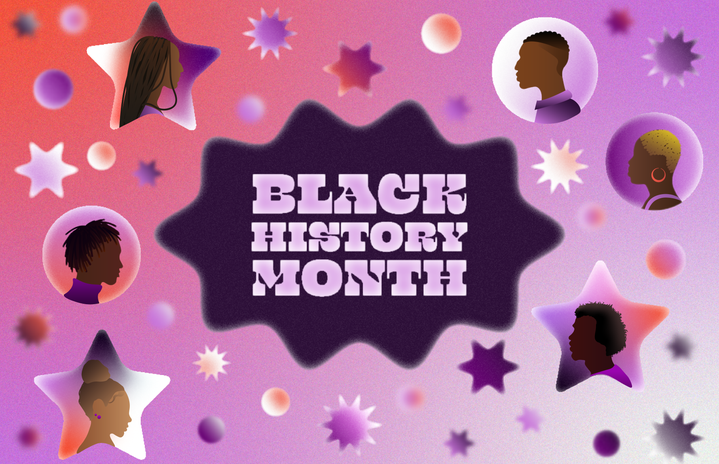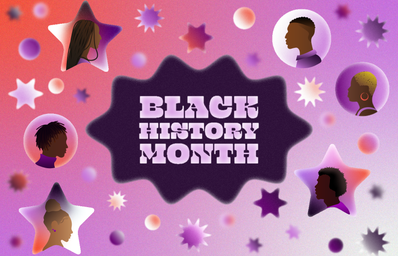The month of February celebrates the achievements and contributions of Black individuals in the United States and Canada. Countries like the Netherlands, Ireland, and the United Kingdom also observe this historical month in October. It is no secret that Black individuals have certainly left an imprint and tremendous impact on American history for generations to come. However, sometimes specific iconic Black figures are lost in history and not necessarily highlighted in textbooks. Here are four influential figures we should never forget in commemoration of the 51st year of Black History Month.
- Sister Rosetta Tharpe (1915-1973)
-
Coined as the “Godmother of Rock ‘N’ Roll,” Sister Rosetta Tharpe elevated the musical genre to new heights in the 1940s. As a queer, Black woman, when severe and traumatizing racism and segregation were rampant, Tharpe broke all barriers to showcase her undeniable talents and personal identity. She already had all the odds against her because of her skin color. Being a woman of queer orientation only created more obstacles, especially in the male-dominated music industry. However, she didn’t let this interfere with her passions and success. A vocalist and electric guitarist, her music intermixed gospel stemmed from her religious background as a young girl in Arkansas, Delta blues, and New Orleans Jazz who sang words of love and sexuality. Her legendary influence on the genre paved the way for artists like Elvis and Johnny Cash.
- Alexander Miles (1838-1918)
-
The manual operation of opening and shutting elevator doors proved a challenging and dangerous task in the 1800s. Inventor Alexander Miles wished to change this treacherous problem and prevent future deaths, especially after his daughter nearly fell to her death down an exposed elevator shaft. Miles, a native Minnesotan, can be thanked for the mechanism that allows the automatic opening and closing of elevator doors, for which he obtained a patent in 1887. His development and brilliance improved and saved countless lives from then till today.
- Bessie Coleman (1892-1926)
-
Bessie Coleman’s dream to become an aviator pilot became reinforced when her brother John, a World War I veteran, did not believe as a Black woman, she would be allowed to fly. At the time, only French women were allowed to train as pilots. She wanted to achieve her life’s desire while also being an inspiration to African Americans and women. She hoped those who wished to could follow in her footsteps and become pilots and train others as she toured the country.
As a maid and sharecropper’s daughter of mixed race, African American and Native American, Coleman was the first to receive an international pilot’s license in 1921 in France. She faced hardship not just as a Black woman but forcibly dropping out of college in Oklahoma because the school’s tuition was unaffordable. Coleman also experienced numerous rejections from various flight schools in the United States, which prompted her to move to France and after encouragement from Robert Abbott, developer of the Chicago Defender, a national newspaper publication. In contrast, her contemporary Amelia Earhart was granted her first United States pilot license in 1921. Coleman, later known as “Queen Bess” or “Brave Bessie,” captivated audiences with her “figure eights” and “loop-the-loop” tricks. Unfortunately, after sustaining her first plane crash, her thriving career came to an indefinite halt on April 30th, 1926, when she died in another along with pilot William Willis due to an unfastened wrench caught in the aircraft’s engine. Her sudden death shocked many who supported her and the legacy she built. Coleman continues to inspire many young women today.
- Garrett A. Morgan (1877-1963)
-
After witnessing a car crash while driving, Garrett Morgan, an inventor and the first Black man to own a vehicle in Cleveland, Ohio, set out to re-design the traffic light from two signals to three, ensuring pedestrian safety and a lessening of car collisions. After patenting his design in 1923, he expanded the copyright to include Canada and Great Britain, eventually selling it to General Electric. Despite only receiving an elementary school education and the son of freed slaves, the three-signal traffic light wasn’t the only creation from Morgan. His other inventions included: the gas mask, chemical hair straightener, and an upgraded version of the sewing machine. We can thank Garrett Morgan’s genius for products that make our lives easier today.
While Black History Month is a time for celebrating and learning more about these and other outstanding individuals’ wonderful contributions, we should always remember that we have an opportunity to explore the significant achievements of past and current Black figures.



